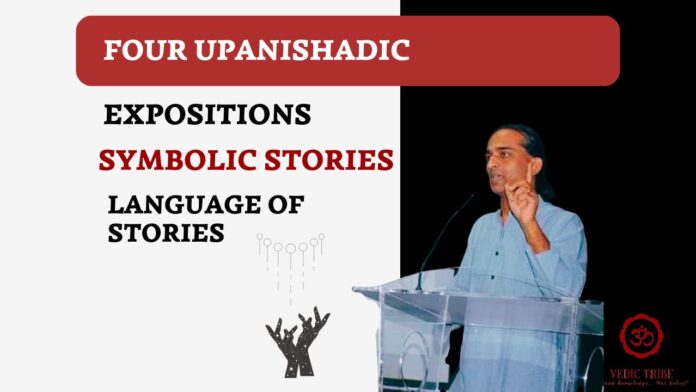The Timeless Nature of Values
In the previous article we discussed symbolic actions in Upanishads. In this article, we will discuss symbolic stories in Upanishads.
Universal values: The concept of “universal values” suggests that certain moral principles and ideals are inherent to the sentient beings. They transcend cultural, historical and even physical boundaries. These values, such as truth, justice, compassion, and love, are fundamental to sentient & conscious beings for social as well as spiritual harmony.
Moral values: The question of whether “moral values” are “real” is a complex one, often debated by western theologians, philosophers and ethicists. While there’s no definitive scientific answer in the western culture, the Vedic tradition have long emphasized on “eternal values” (Sanatana dharma).
In Upanishads, these eternal values are presented in symbolic stories and have inspired a whole generation of storytelling like – Panchatantra.
The Symbolic Language of Stories
Upanishadic stories: Stories, myths, and legends have been used throughout human history to convey profound truths and values. The Upanishads, as a collection of ancient Indian philosophical texts, are rich in symbolic stories that illustrate eternal values.
Story of Satyakama Jabala in Chandogya Upanishad: The story of Satyakama Jabala is a prime example of how the Upanishads use symbolic stories to convey eternal values. Satyakama, despite being born out of wedlock, possessed unwavering honesty and integrity. When asked about his lineage, he truthfully replied, “I do not know who my father was; my mother is Jabala.” This simple act of truthfulness impressed the sage Gautama, who recognized the boy’s potential and initiated him into the sacred knowledge of the Vedas.
The story of Maitreyi and Yajnavalkya in Brihadaranyaka Upanishad: This story highlights the value of true knowledge and the pursuit of spiritual liberation, where Maitreyi questions her husband about the nature of the Self, demonstrating the importance of intellectual curiosity and seeking deeper meaning.
The Symbolic Significance
The stories like that of Satyakama Jabala and Maitreyi symbolizes the importance of values such as truthfulness, honesty, pursuit of true knowledge and intellectual curiosity. They highlight the idea that true knowledge and spiritual growth are only possible when one is grounded in pursuit of the ultimate truth. This value is not merely a cultural or religious norm; it is a fundamental principle that applies to all sentient beings, regardless of their race, culture, tradition and even their realm of existence.
The eternal tapestry of Values
The Upanishads, through their symbolic stories, weave a rich tapestry of eternal values. By understanding the deeper meaning behind these stories, we can connect with the timeless wisdom they offer. These values are not merely abstract concepts; they are living realities that guide us towards spiritual growth.
Key take aways for you:
Internalize the stories: Do not merely read Upanishadic stories but internalize them. Empathize with the characters & their emotions and reflect on the underlying moral or spiritual lesson.
Narrate them to children: Feel free to narrate these stories to children and convey the moral & spiritual lesson.
But remember:
Symbolism: Do not wish to see a historical certification for these stories, because they are more of symbols than actual events.
Continue the enquiry: Do not dilute the spiritual teachings due to cultural cringe. Instead, be bold and be vocal in spreading the Upanishadic teachings.
With this, we wrap up this series.
The “Vedic Tribe” is happy to have brought you these four symbolic expositions used in Upanishads.
Our intention is to create enough curiosity in you to enable you to study Upanishads and progress in your spiritual journey.
All the best.
Madhwesh K
Vedic Tribe

